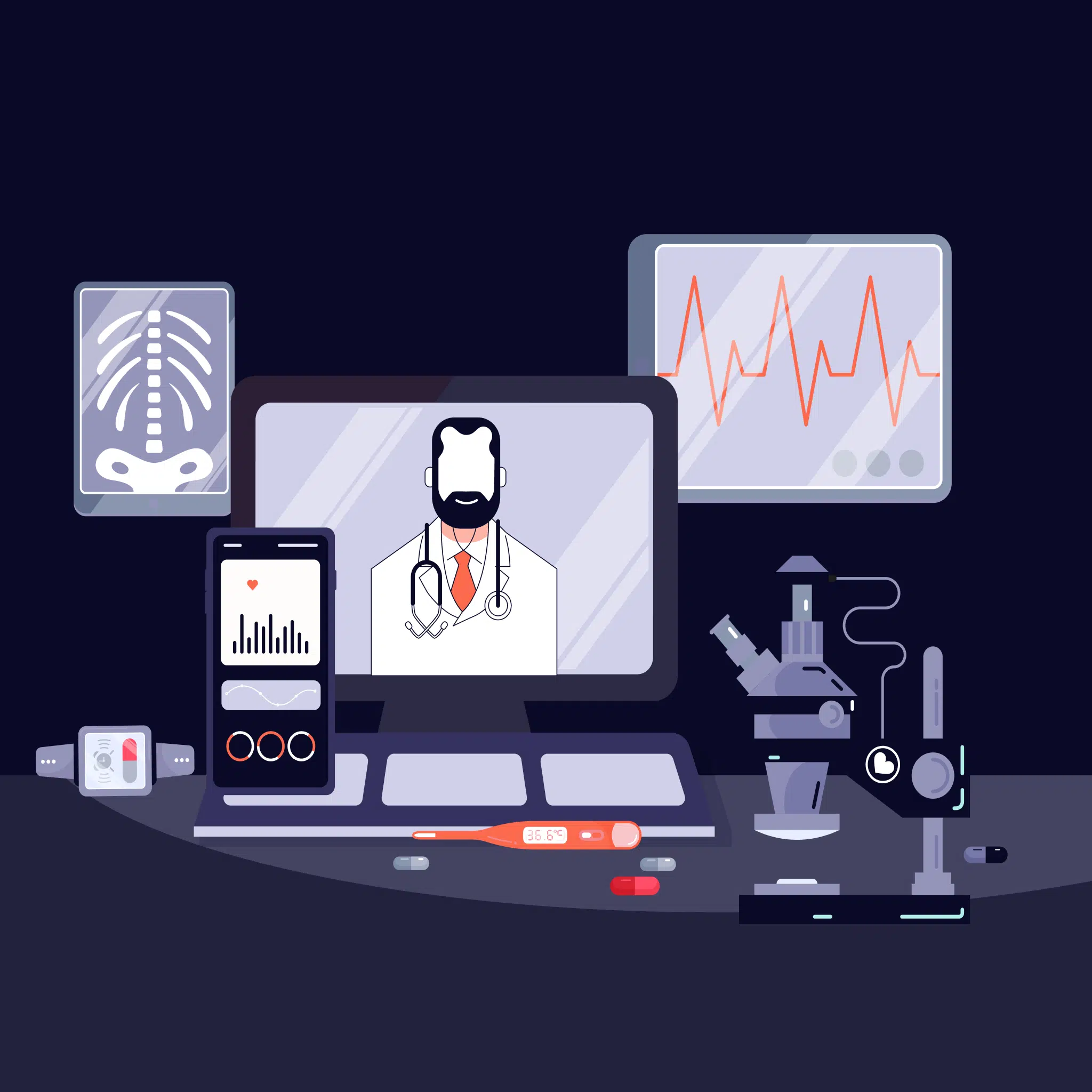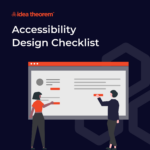In recent years, Remote Patient Monitoring (RPM) has become a revolutionary development in the healthcare sector; by providing services for the healthcare provider for monitoring patients’ vital signs and health parameters without being present.
This transition from patient to provider for performance is possible due to technology advancements coupled with the ever-increasing need of better treatment outcome, decongesting hospitals, and over stressed healthcare scenarios particularly with chronic sufferers. It utilizes varied digital mediums such as wearables, sensors, mobile applications, telemedicine etc., where care delivery goes beyond the traditional peripheries of clinical settings. Given present and future challenges like growing elderly population, increase in chronic diseases and high demand of healthcare services and management.
The Current State of Remote Patient Monitoring
Remote Patient Monitoring (RPM) uses real-time health data, like heart rate and blood pressure, to provide continuous monitoring for conditions such as diabetes and heart disease. This strategy would help in stopping emergencies from re-occurrence by preventing re-admissions in a facility for treatment hence allowing timely responses to problems. And RPM comes in handy for patients one is responsible for from health care facilities who are being attended to in building up on their treatment services, which is easier. The situational analysis changed radically with the novel coronavirus which made RPM a central merchandise in health systems globally. The User-friendly design is important for making RPM widespread and impactful for both patients and healthcare providers .
Telemedicine Implementation
Telemedicine is a health care service that is offered from a distance using digital communication equipment. It too has seen a huge uptake, particularly in the COVID-19 pandemic. The integration of RPM and telemedicine are a formidable combination in enhancing patient care along the continuum of care. The devices in RPM are continuously monitoring patients, and when this is coupled with telemedicine, healthcare providers can deliver real-time consultations based on the data collected.
This works out quite well in keeping in check the health conditions of patients in rural or under-served areas where access to healthcare is limited and who, therefore, cannot frequent physical visits to healthcare facilities. In fact, telemedicine consultations based on data collected through RPM have also enabled doctors to give personalized advice on treatment adjustments and prescription medication.
Artificial Intelligence and Predictive Analytics
AI is revolutionizing healthcare which includes Remote Patient Monitoring (RPM). AI and machine learning is helpful to identify the large amounts of data generated by the devices, analyze the patterns and predict health outcomes. For example, early signs of heart disease can also be detected by AI from a wearable device, potentially preventing heart attacks. In the same manner, users can allow insulin pumps to regulate the supply of the hormone automatically by analyzing different factors at work.
Through the use of predictive models being administered by artificial intelligence, it is possible for the medical fraternity to establish aspects related to the health of a person that will come up in future, even before they actually occur and not after. This rapid advancement will improve patient satisfaction as well cost reductions miraculous as the severe events can attenuate before it lingers.
The future technological capacity in RPM is indeed predicated on the development of effective cybersecurity measures as well. These serve to safeguard patient information as well as other regulatory compliances such as the PIPEDA – which is the Personal Information Protection and Electronic Documents Act or the HIPAA that covers Health Insurance Portability and Accountability Act.
Design’s Role in Enhancing Remote Patient Monitoring
While technology is the core, design definitely plays an undeniably crucial role in RPM. Any effective RPM solution needs to make UX a priority so that the devices will be functional, highly usable, and intuitive for both patients and healthcare providers. In future, RPM requires and enables providers to deliver more efficient and effective care across a plethora of medical conditions.

User-Centered Design
For a successful RPM system, design revolves around the users: a patient, caregiver, or healthcare provider. Understanding the complexity of healthcare data and the demographics of patient populations, for developing user interfaces that should be effortless to understand and navigate. Older adults, for example, are a common target of RPM devices when managing chronic conditions and may have restricted skills in advanced technology. Thus, designing the interfaces of RPM to be of simplified navigation, large text, and clear instructions will better promote the engagement of such a demographic with the technology. Additionally, personalization capabilities, such as customizable dashboards or notifications, enhance the user experience by providing the patient with choices in regard to how the system should work.
Data Visualization
RPM generates a huge amount of data that needs to be represented in an easily understandable format. Healthcare providers should be informed with insights that are clear, actionable, and used as fast as possible in making decisions. Adequately designed visualizations of the data through graphs, charts, and other types of dashboards support the provider in the identification of trends, monitoring of patient progress, and early detection of risks to health.
Data visualization is equally important for patients. A user-friendly interface showing health information visually in a comprehensible format empowers patients to take responsibility for their health. For instance, a diabetic patient who is monitoring his glucose levels should easily know if those are in the desired range and should get guidance on corrective actions needed.

Accessibility and Inclusivity
Designers can make this approach inclusive by devising interfaces that cater to all levels of technical literacy, various disabilities, and preferences for a certain language. For instance, voice commands and haptic feedback provide better usability of RPM devices in the case of patients with visual disabilities.
The concept of inclusion further creates a scope for cultural consideration. Multilingual support, cultural sensitivity in design elements, contributes to making RPM systems more accessible to underrepresented groups and hence allows this technology’s benefits to be offered to all populations. The Future of RPM is bright. Yet, there remain some challenges. The realization of the total benefit of remote healthcare requires overcoming these following barriers: Technological Adoption.
The main problem of RPM is tremendous resistance from healthcare providers and patients toward complete adoption of the technology. Health care providers may be resistant to reliance on new tools due to concerns regarding inaccuracies in data, disruption in workflow processes, and a steep learning curve while incorporating RPM into their clinical practice. On the other hand, the patients may be daunted by the technology or may otherwise have concerns about the reliability of the results. Of course, such challenges will be conquered only with education and training and through clear demonstration of benefit to patients and providers.
Internet of Medical Things (IoMT)
In the future, Remote Patient Monitoring (RPM) will seamlessly integrate with the Internet of Medical Things (IoMT), where wearables, smart implants, and health apps provide real-time health data. Throughout the environment, healthcare institutions in the field of medicine have been provided with features to allow them to work with patients lean processes. With continuous data from any monitoring instrument or an implanted glucose or heart product, physicians could change assignments to the patients allowing access of care seekers to better treatment and care.
This facility will see enhanced protection of clinical information it because, thanks to blockchains patients would have more say on where their data goes, and also be protected from cyber assaults. The successful implementation of RPM thus requires the need to undertake significant investments in creating, especially within the hard-to- reach areas to enable the audiences to avail of the technology.
Conclusion
Finally, the realization of the goal and best output from RPM is dependent on factors such as present and most advanced technologies as well as security just to meet the patients’ demands. In case all these factors are taken care of, RPM can quickly gain foot and become a part and parcel of advancement in healthcare where a patient helps in managing his or her health while the health care provider is able to deliver the most optimal care in almost every medical condition.






